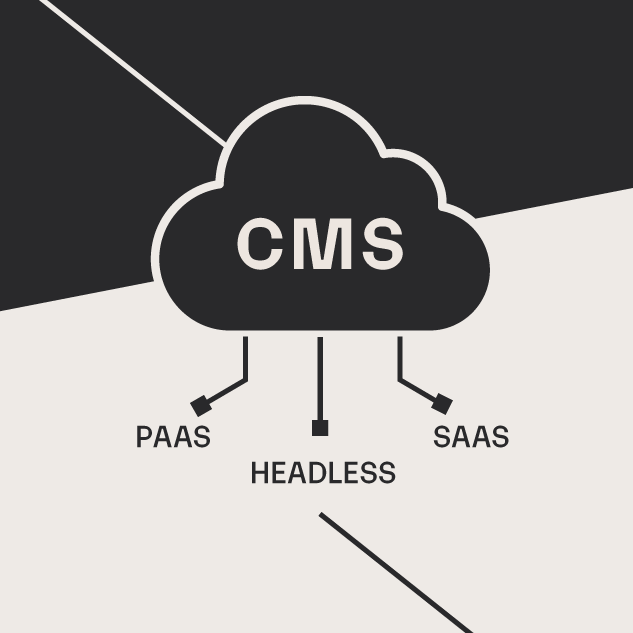PIM, ERP, CMS, AMS, MAP, CRM…What does it all mean?
Chris Osterhout SVP of Strategy#CMS, #Commerce, #Industry Insights

Learn about the different integrated systems that make up your digital strategy and how they can bring value from an eCommerce standpoint.
Businesses are complicated. No matter what product or service you provide, you’ve got a lot to keep track of, and that’s before you even begin to consider how your website relates to all the aspects of your business. Things can become even more confusing through the constant use of abbreviations like CRM, ERP, CMS, and PIM. Just what do all these combinations of letters mean, and how do they relate to how you can use your website to integrate all the different parts of your business? Let’s take a look at what these various terms for integrated systems can address as part of your business, utilizing a CMS-driven website with eCommerce as a use case.
CMS: Content Management System
Content Management Systems (CMS) have become the backbone for many enterprise companies to manage their digital presence effectively. A CMS not only offers dynamic content management capabilities but also encompasses a range of functionalities such as eCommerce integration, personalization, targeted content delivery, workflow management, and more. This makes it indispensable for businesses that aim to edit and manage their websites and eCommerce offerings through a centralized administration center, leveraging these features to connect with their audience effectively. The evolution of CMS terminology reflects the diversification and specialization within the field, giving rise to concepts such as composability, headless CMS, and Digital Experience Platforms (DXP). Each of these represents a different approach to managing and delivering content, catering to varying business needs and technology environments.
MAP: Marketing Automation Platform
Marketing Automation Platforms (MAPs) have transitioned from being considered a luxury to an indispensable element in every marketing technology stack. In the early stages of launching a CMS-driven website, you might focus on tracking basic analytics and conversion rates to gauge web traffic and eCommerce effectiveness. However, as your business evolves, the need to deeply understand your visitors—identifying them by name, like “Chris Osterhout from Diagram”—becomes crucial. The capability to connect this rich, qualitative data with your marketing and sales strategies underscores the value of MAPs. Platforms such as HubSpot, Marketo, and Salesforce are pivotal in automating marketing communications, managing lead scoring and distribution, and uncovering insights about user engagement on your site. Integrating a MAP with your CMS and eCommerce systems enriches customer lifecycle management by providing a comprehensive view of visitor interactions, making MAPs a critical component for achieving marketing success and driving business growth.
ERP: Enterprise Resource Planning
Many enterprise companies use resource solutions such as SAP software to manage their day-to-day operations, handling data such as customer records, product pricing, and inventory. What’s not always clear is how this data can be integrated seamlessly into your website. In many cases, eCommerce websites create and fulfill web orders through the eCommerce tools themselves. This, however, usually requires a manual entry into a back-end system, such as an ERP, to fulfill the orders and ship them to the end customer. This is where a seamless integration between your eCommerce website and your ERP’s Application Programming Interface (API) layer saves time and money. In this use case, the web order could be created on the eCommerce website, but instead of fulfilling the order within the CMS/eCommerce tool itself, you can utilize a workflow to push the order directly into your company’s back-end ERP.
PIM: Product Information Management
While a company’s ERP solution may contain essential data for managing your company’s operations, it might not have detailed information about your products themselves. That’s where Product Information Management comes in, providing a solution for storing rich product information, including digital assets such as images, media, and product descriptions that will be seen by customers. Storing this data in a central repository allows it to be accessed by your website or used in other marketing materials, such as print catalogs. PIM provides a middleware solution that takes your ERP data, combines it with the media, descriptive information, and marketing copy you’ve created, and places it in front of your customers, integrating your website with your day-to-day operations and ensuring consistency in all product-related communication your customers see. In this use case, much of the detailed product information such as web descriptions, images, etc., would be stored and edited within the PIM and be pushed into the CMS/eCommerce tools.
AMS: Association Management System
Associations manage their data differently than other enterprise companies, so they require a different solution. An Association Management System such as netFORUM or iMIS serves the role of ERP for most associations, handling memberships, renewals, and product information for any materials the association sells. In this use case, the AMS website integration path is similar to the ERP integration path described above.
CRM: Customer Relationship Management
Just as Marketing Automation Platforms (MAPs) have become vital for streamlining marketing efforts, Customer Relationship Management (CRM) systems like Salesforce or Microsoft Dynamics CRM are now foundational for enhancing website personalization and content contextualization. Businesses leverage CRM solutions to manage customer interactions comprehensively, encompassing contact information management, sales tracking, and customer support. These tools are instrumental in centralizing customer data, facilitating effective communication, and delivering superior service. Similar to MAPs, CRMs play a pivotal role in personalizing the user experience on websites. They enable businesses to tailor content and interactions based on the rich customer data they hold, transforming generic interactions into personalized journeys. When direct integration with a MAP is not in place, utilizing a CRM becomes the prime method for automating the capture of website leads into back-end processes. By pushing form submissions directly into a CRM, the information is immediately actionable, streamlining workflows, saving valuable time, and significantly enhancing customer satisfaction through personalized engagement and contextualized content.
Navigating the complex landscape of tools and solutions available for business management can indeed be overwhelming. Integrating these various systems—ranging from CMSs and MAPs to CRMs—into a cohesive website strategy that aligns with your business objectives can present a significant challenge. Successfully managing the full customer lifecycle, from anonymous website visitor to converted eCommerce customer, is crucial for gaining detailed insights necessary to optimize your return on investment (ROI) from your digital properties. As organizations embark on or continue their digital transformation journeys, they will inevitably need to address the integration and effective utilization of these systems. For organizations seeking to navigate this transformative process successfully, understanding how to leverage these tools in harmony is critical. If you're looking for more information on how to make these integrations work for your business, or if you're navigating the complexities of digital transformation and need guidance on managing these essential systems, feel free to reach out to us.
And if you're currently in the process of researching CMS migrations or upgrades, click on the button below to download our free CMS Migration Blueprint.
Related Posts

Umbraco 7 Upgrade Costs and Considerations
Topics to consider when budgeting for an Umbraco 7 upgrade, including business needs, website redesign, integrations, and e-commerce needs.

Choosing the Right Cloud CMS: Key Factors to Consider
Selecting the right cloud-based Content Management System (CMS) demands a careful balance between budget, technical expertise, and business needs.
Results Matter.
We design creative digital solutions that grow your business, strengthen your brand and engage your audience. Our team blends creativity with insights, analytics and technology to deliver beauty, function, accessibility and most of all, ROI. Do you have a project you want to discuss?
Like what you read?
Subscribe to our blog "Diagram Views" for the latest trends in web design, inbound marketing and mobile strategy.


